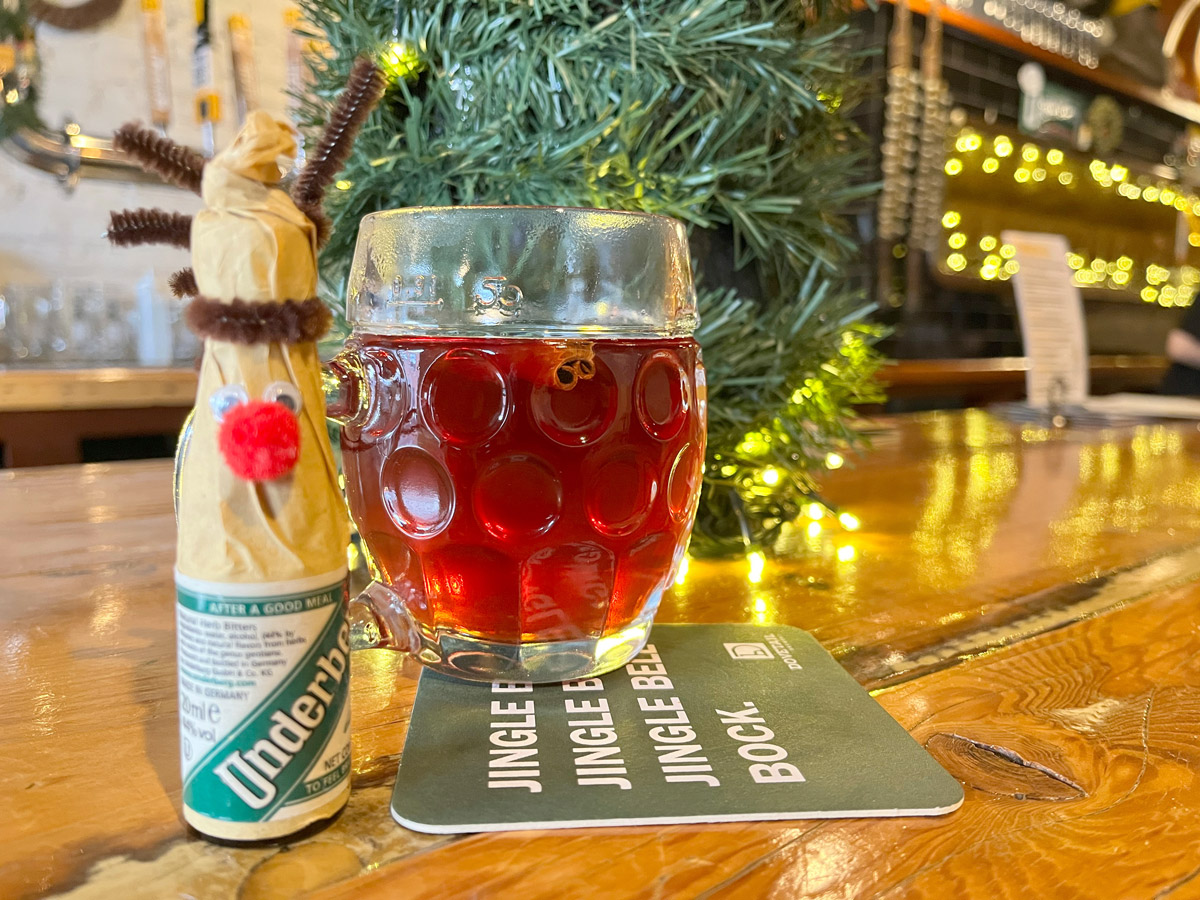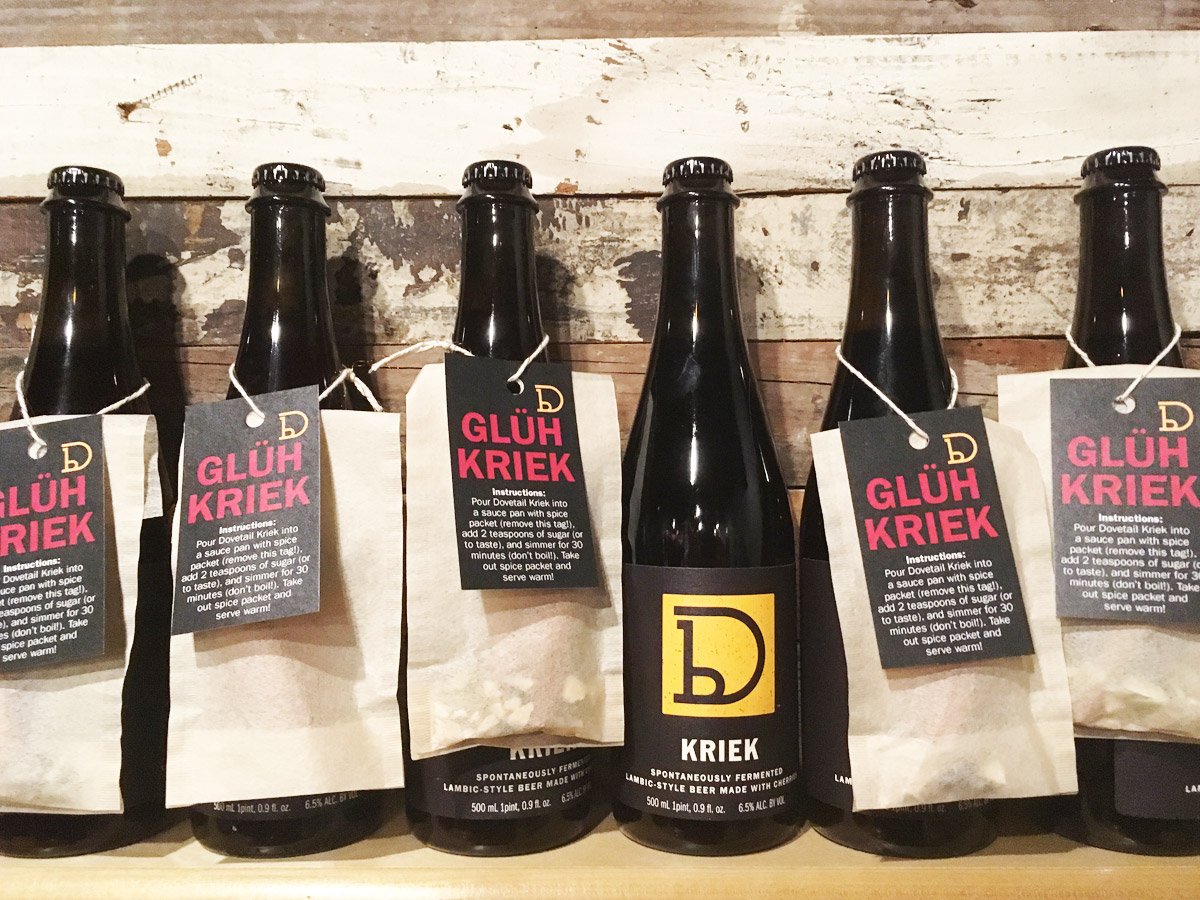Start 14-Day Trial Subscription
*No credit card required

Is Hot Beer Making a Comeback?
Hot beer, or mulled beer, is brewed with spices, citrus and honey then heated up to create a cozy and invigorating pint.
If pressed to guess the next great beer trend, odds are close to nil that hot beer would rank among the most popular prognostications.
And yet, here we are, amid the unpredictability of the early 2020s, and hot beer is not only available, but gaining popularity across the country.
Markets in Indiana and Oregon, and breweries from Chicago to Denver are mulling beer with citrus, honey and spices to create cozy concoctions that are perfect for dispelling the cold and spreading seasonal cheer, perfect for springtime.
“Traditions are very much part of the holidays,” says Jenny Pfafflin, Marketing & Creative Manager/Brewer at Dovetail Brewery in Chicago. “I think that's what makes mulled beer so appealing. It's something that you can look forward to during this time of year”
Dovetail started serving mulled beer in Christmas 2018 with Glühkriek, their signature warm brew. Tart and refreshing and a little sweet and wholesome, “it’s been popular since it came out,” says Pfafflin.
Warming beer, especially in colder months and climes, has been an important part of brewing history. While that knowledge is all but forgotten stateside, nations across Europe still revere their local takes on warm beer.
In German-speaking countries, they might call it glühbier, or “glow beer,” and serve it alongside glühwein. In Poland, warm Grzane Piwo is available year-round and is often flavored with cinnamon or raspberries. Pre-mixed bottles are ready in the grocery store to bring home and warm on the stovetop.
A triumvirate of breweries in and near Denver have been trying to bring glühbier to the local scene with pop-ups that are evolving into a regular affair.

Hot Beers earn that name by being either heated in a percolator or by using a more traditional method of inserting a red-hot poker into a freshly poured pint.
These three breweries are Primitive Beers, which focuses on barrel-aged spontaneous fermentations, Cohesion Brewing and their passion for Czech lagers, and WeldWerks, who are devoted to serving up “Dialed-In Beer.”
“I couldn’t be at the first pop-up,” says Eric Larkin, who founded Cohesion with his wife and business partner Lisa, “and I hadn’t tried a hot beer until we did the second pop-up in January. It was fun to watch and an interesting way to suss new flavors out of the beer.”
Beers at the pop-ups are heated either in a percolator or using a more traditional method by inserting a red-hot poker into a freshly poured pint. The poker doesn’t get the beer as warm as a percolator. It does, however, create a marshmallow-like foam on top. Also, it’s way cooler to watch.
Larkin says, “There are a lot of nucleation points for the carbonation to exsolve and for foam to fill the glass. It’s pillowy and just a little caramelly-sweet. We had people coming back asking us to re-poke their beer hoping they’d get more foam.”
The best styles for mulling are typically from the tangy world of sours and lambics, as well as malt-forward styles like bocks. Pfafflin and the team at Dovetail get creative with their modern interpretations.
She says, “The heat amplifies the flavors of the base beer, including acidic and bitter notes, which is why we backsweeten our mulled beer. Anything too bitter may not work well with mulling spices, but I'd say there's a lot of room to play around! Something like an English mild with chestnuts and cinnamon could make for a fun glühbier.”
Mulling alcoholic beverages is an ancient tradition. While we typically think of wine as the central figure, recipes for mulled ale and beer have existed for hundreds of years and were widely popular as recently as the fin-de-siècle.
“People are more connected with the flavors of hot beer than they expect,” says Brandon Boldt, who founded Primitive Beer with his wife Lisa (coincidentally).
“I liken it to the profiles of mulled wine and hot cider, even a hot toddy. People hear hot beer and they think of something like a frat party where the keg’s gone stale, but mulled beer is the exact opposite of that. People are already enjoying hot fermentations. Beer takes them to that place in a way that is both new and familiar.”
Most mulled ale recipes sound like a typical mulled wine. Gently warm the liquor with spices like cinnamon and nutmeg, and a hefty dose of honey or sugar. Traditional mulled beer also calls for a thickener like egg yolk tempered with cold ale. Specific recipes include aleberry, which adds “sops of bread,” and drink-meat, thickened also with bread or oatmeal, and caudle (also called posset), a variety of warmed ale or wine or milk that is thickened with flour and dating back to the mid-13th century. Thickening the drink appears central, and butter is also mentioned as a potential unguent.

Dovetail Brewery started serving mulled beer in Christmas 2018 with the tart and refreshing Glühkriek, their signature warm brew that's a little sweet and plenty wholesome.
Almost every recipe highlights some medical miracle that comes from drinking mulled ale. Purported cures stretch from the common cold to complex issues involved with pregnancy and even the myriad pains that arrive with old age.
More than that, though, mulled beer is hailed as the ultimate drink for holiday celebrations and cold-weather carousing. A Christmas Eve recipe from Cumberland, in the far north of England, instructed to string apples above a fire with a pot of spiced ale on the coals. The drink was ready when the apples fell off the string and into the warmed ale below.
“If you lived in a cold winter climate before heating and refrigeration became common in houses, you didn’t drink cool beverages in winter. You drank anything to keep warm. It’s only with the Industrial Revolution and refrigeration and macro beer that we’ve come up with this idea that beer should and must be ice cold and crystal clear,” Boldt says.
Prior to the proliferation of artificial refrigeration, barkeeps the world over served beer at cellar temperature, just a few degrees below whatever it was outdoors. In those days, cold beer was a sign that beer had been left out and might be stale. Warming it up was a way to show people that your beer was not only fresh, but the freshest possible.
Mulled beer is developing a rabid following among beer geeks across America. It’s a tasty way to rediscover an important facet of beer history, as well as a fine way to pass a cold night with friends and family.
As written in Kenneth Grahame’s The Wind in the Willows, “... soon every field-mouse was sipping and coughing and choking (for a little mulled ale goes a long way) and wiping his eyes and laughing and forgetting he had ever been cold in all his life.”



